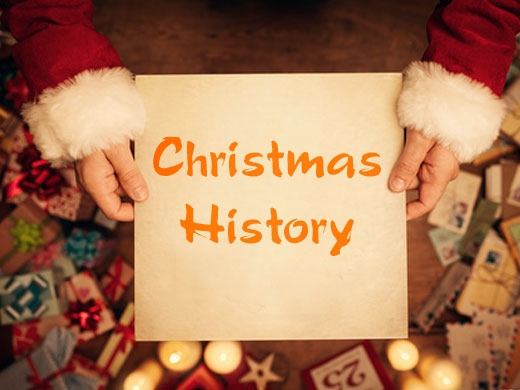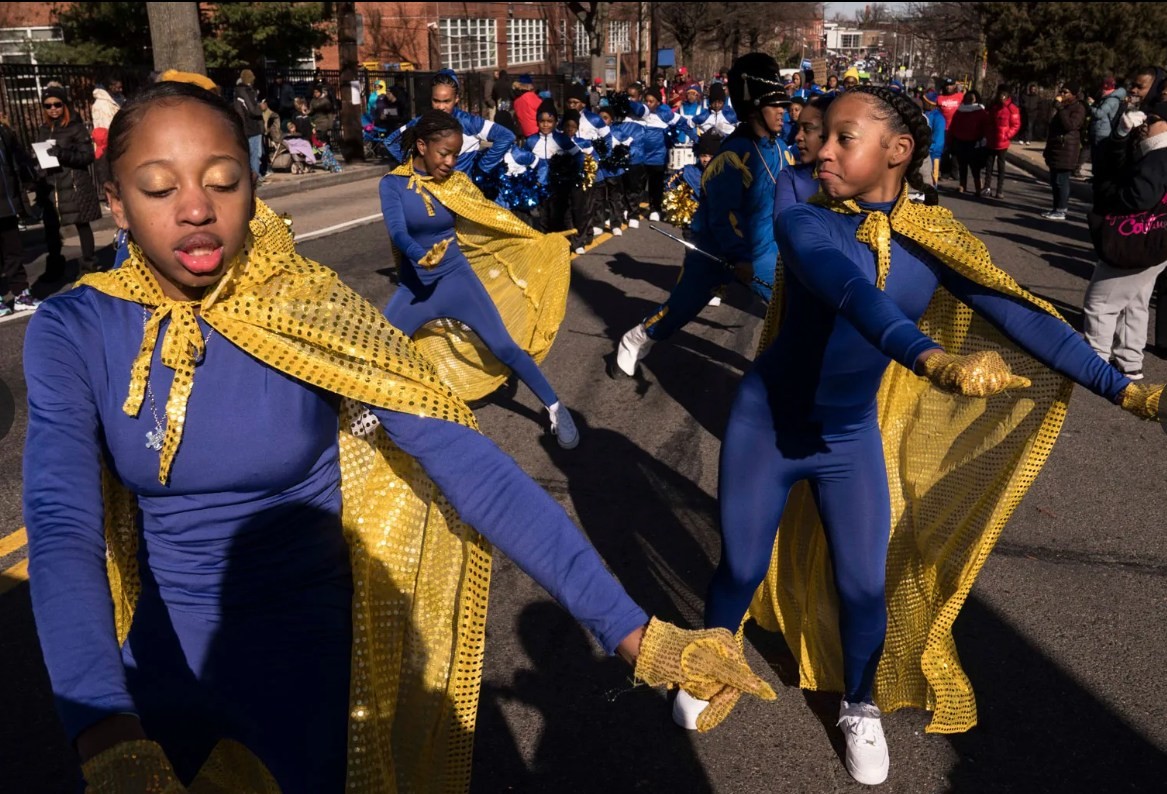What is Christmas: History, Meaning and Tradition Around the World
 |
| When did Christmas begin? |
What is Chrismas?
Christmas is the annual Christian festival celebrating Christ's birth, held on December 25 in the Western Church.
The traditional date of December 25 goes back as far as A.D. 273. Two pagan festivals honoring the sun were also celebrated on that day and it is possible that December 25 was chosen to counteract the influence of paganism. To this day some people feel uncomfortable with Christmas because they think it is somehow tainted by the pagan festivals held on that day.
But Christians have long believed that the gospel not only transcends culture, it also transforms it. In A.D. 320 one theologian answered this criticism by noting, “We hold this day holy, not like the pagans because of the birth of the sun, but because of him who made it.”
Christmas has its origins as a pagan holiday. December 25 was selected to line up with several pagan Roman holidays that celebrated the winter solstice and worship of the sun.
Most of the traditional customs of Christmas, such as gift giving, tree decorating, light hanging, and feasting, come from sources other than the Church.
The historical roots of Santa Claus come from many sources. The earliest known inspiration for the legend comes from the fourth century in the form of Saint Nicholas of Myra, a Greek Christian figure known for his generosity to the poor.
Mentions of Santa Claus types of figures appear in Germanic lore and various northern European religions that thrived before Christianity took hold. The American version of Santa Claus seems to have originated from a Dutch legend about Sinter Klaas, which settlers brought to America in the seventeenth century. Americans embraced the idea of Santa Claus, who was said to deliver gifts to good boys and girls on Christmas Eve.
To many Americans, Santa Claus embodies the spirit of giving. To celebrate the nature of Santa Claus during the Christmas holidays, many people not only give gifts to loved ones, but they also donate time and money to charities.
The Origin of Christmas Eve
For centuries, Christmas was celebrated not as a single day, but as a whole season in parts of the world, beginning with this day, December 24, Christmas Eve. Perhaps the practice of celebrating the evening before the big day is an echo from ancient Jewish reckoning. Among earlier Jews, a day began at six in the evening and ran until six the following evening. Had not Moses written: "An evening and a morning were the first day"?
What is Christmas means?
Christmas means "Christ-mass." Although the date is a guess, the tradition of observing it goes back to at least the fourth century. Under the influence of the church, Christian traditions replaced pagan solstice festivals throughout Europe. Often the more innocent pagan practices (such as bringing in a Yule log, decorating with holly and the like) were carried over into the Christmas observance, transfigured with new meaning.
For many of us, Christmas truly is the most wonderful time of the year. According to the Pew Research Center, about 90 percent of Americans and 95 percent of Christians celebrate Christmas each year, so it's a widely celebrated holiday centered on many much-loved traditions: decorating our houses and putting up a Christmas tree, baking Christmas desserts, attending church services on Christmas Eve, eating lots of holiday foods we've looked forward to for ages, and exchanging gifts on the big day. The Pew Research Center's staggering numbers aren't necessarily surprising: It feels like people start celebrating the holiday as soon as the leaves change color each fall, according to CountryLiving.
It's no secret that Christmastime is busy. So, with all of the excitement around the holiday, have you ever stopped and wondered where it all started? Well, we've done the research on the history of Christmas for you to help you truly understand its backstory. As you probably guessed, the holiday has changed a lot since its inception.
This year, when you're taking part in Christmas traditions like putting up your Christmas tree, whipping up a Christmas ham for your family, or even singing carols, you'll have a better grasp on the history of Christmas and a grander appreciation for the most wonderful time of the year. (Check out these interesting Christmas trivia questions, too, plus the history of the Christmas tree and the history of Christmas colors.)
What is Christmas Spirit?It's the most wonderful time of the year! Once we’ve had our fill of turkey and welcomed the holiday season properly, we're constantly encouraged to get into the Spirit of the Season. This phrase is most heavily tied to Christmas in particular, but it would be hard to deny that similar themes aren't attached to other December holidays. In general, we're encouraged to be joyful, charitable, generous, kind, and forgiving—which are all behaviors that run counter to our inclined responses to the stresses caused by holiday shopping, holiday travel, and general holiday interactions. Where does the idea of Christmas spirit come from and why does it hinge so much on behavior? The message of Christmas spirit is derived from a few general experiences. The first is an actual specter. In the seasonal classic A Christmas Carol Ebenezer Scrooge is confronted by several apparitions who force him to confront his miserly ways and open his heart. |
When did Christmas begin?
Officially, Christmas as a holiday most likely began sometime around the 4th century. But let's back up a bit. According to the History Channel, winter has always been a time of celebration—even before the arrival of Jesus. "Many peoples rejoiced during the winter solstice, when the worst of the winter was behind them and they could look forward to longer days and extended hours of sunlight," according to the History Channel. The Norse celebrated Yule, and Germans honored the god Oden. The Romans celebrated Saturnalia to honor Saturn, the god of agriculture, and the holiday Juvenalia was held on December 25 for the infant god, Mithra (this was the most sacred holiday for some Romans at the time).
But when Christianity first began, Jesus's birth wasn't celebrated—Easter was the main holiday. The Bible doesn't even mention a specific birth date for Jesus, but it was thought to have taken place on January 6, not December 25. That date still belonged to the Juvenalia holiday.
 |
| Christmas as a holiday most likely began sometime around the 4th century. Photo: The Holiday Spot |
4th Century - 17th Century
All of that changed in the 4th century when Pope Julius I selected December 25 as the official date when Christians would celebrate the birth of Jesus. Why the change? The reasons are still debated, but the generally accepted belief is that December 25 was chosen to increase the likelihood that the celebration would be embraced by Christians around the world over pagan traditions that were already celebrated at the time.
By 432, Christmas had spread to Egypt, and by the Middle Ages, the practice of celebrating Christmas had spread around the globe and replaced pagan festivities, and it would continue to spread in the following centuries, too. Christ's birth was celebrated on December 25, and January 6 became the date that people marked the Feast of the Epiphany, commemorating when the wise men arrived in Bethlehem and found Jesus in the manger. (The period of time between both dates would become known as the 12 days of Christmas.)
17th Century - Present Day
By the 17th century, religious reforms were gaining speed, and they also impacted how Christmas was celebrated. Oliver Cromwell and the Puritans cancelled Christmas, and it did not return until Charles II returned to the throne. When the Pilgrims came to North America in 1620, they did not bring Christmas with them, and it was actually outlawed in Boston from 1659 to 1681. Not wanting to embrace anything British, Americans declined to celebrate Christmas after the American Revolution, so Christmas wasn’t a federal holiday in the U.S. until June 26, 1870.
| Americans would go on to embrace and update the Christmas traditions brought to the United States by immigrants, such as the Dutch families who honored the now-very-well-known Saint Nicholas, and welcome new traditions from abroad, such as the Christmas tree, molding the holiday's traditions into what we know and love today. |
Christmas Trees
Long before the advent of Christianity, plants and trees that remained green all year had a special meaning for people in the winter. Long before the advent of Christianity, plants and trees that remained green all year had a special meaning for people in the winter. Just as people today decorate their homes during the festive season with pine, spruce, and fir trees, ancient peoples hung evergreen boughs over their doors and windows. In many countries it was believed that evergreens would keep away witches, ghosts, evil spirits, and illness.
Santa Claus
The man we know as Santa Claus has a history all his own. Today, he is thought of mainly as the jolly man in red, but his story stretches all the way back to the 3rd century.
The Legend of St. Nicholas
The legend of Santa Claus can be traced back hundreds of years to a monk named St. Nicholas. It is believed that Nicholas was born sometime around 280 A.D. in Patara, near Myra in modern-day Turkey. Much admired for his piety and kindness, St. Nicholas became the subject of many legends. It is said that he gave away all of his inherited wealth and traveled the countryside helping the poor and sick.
One of the best known of the St. Nicholas stories is that he saved three poor sisters from being sold into slavery or prostitution by their father by providing them with a dowry so that they could be married. Over the course of many years, Nicholas’s popularity spread and he became known as the protector of children and sailors. His feast day is celebrated on the anniversary of his death, December 6. This was traditionally considered a lucky day to make large purchases or to get married. By the Renaissance, St. Nicholas was the most popular saint in Europe. Even after the Protestant Reformation, when the veneration of saints began to be discouraged, St. Nicholas maintained a positive reputation, especially in Holland.
Christmas Tradition Around the World
Christmas as we know it today is a Victorian invention of the 1860s. Probably the most celebrated holiday in the world, our modern Christmas is a product of hundreds of years of both secular and religious traditions from around the globe.
Christmas in Finland: ‘Hyvää Joulua!’
Many Finns visit the sauna on Christmas Eve. Families gather and listen to the national “Peace of Christmas” radio broadcast. It is customary to visit the gravesites of departed family members.
Christmas in Norway: ‘Gledelig Jul!’
Norway is the birthplace of the Yule log. The ancient Norse used the Yule log in their celebration of the return of the sun at winter solstice. “Yule” came from the Norse word hweol, meaning wheel. The Norse believed that the sun was a great wheel of fire that rolled towards and then away from the earth. Ever wonder why the family fireplace is such a central part of the typical Christmas scene? This tradition dates back to the Norse Yule log. It is probably also responsible for the popularity of log-shaped cheese, cakes, and desserts during the holidays.
Christmas in Germany: ‘Froehliche Weihnachten!’
Decorating evergreen trees had always been a part of the German winter solstice tradition. The first “Christmas trees” explicitly decorated and named after the Christian holiday, appeared in Strasbourg, in Alsace in the beginning of the 17th century. After 1750, Christmas trees began showing up in other parts of Germany, and even more so after 1771, when Johann Wolfgang von Goethe visited Strasbourg and promptly included a Christmas tree is his novel, The Suffering of Young Werther. In the 1820s, the first German immigrants decorated Christmas trees in Pennsylvania. After Germany’s Prince Albert married Queen Victoria, he introduced the Christmas tree tradition to England. In 1848, the first American newspaper carried a picture of a Christmas tree and the custom spread to nearly every home in just a few years.
Christmas in Mexico: ‘Feliz Navidad!’
In 1828, the American minister to Mexico, Joel R. Poinsett, brought a red-and-green plant from Mexico to America. As its coloring seemed perfect for the new holiday, the plants, which were called poinsettias after Poinsett, began appearing in greenhouses as early as 1830. In 1870, New York stores began to sell them at Christmas. By 1900, they were a universal symbol of the holiday.
In Mexico, paper mache sculptures called pinatas are filled with candy and coins and hung from the ceiling. Children then take turns hitting the pinata until it breaks, sending a shower of treats to the floor. Children race to gather as much of of the loot as they can.
Christmas in England: ‘Merry Christmas!’
An Englishman named John Calcott Horsley helped to popularize the tradition of sending Christmas greeting cards when he began producing small cards featuring festive scenes and a pre-written holiday greeting in the late 1830s. Newly efficient post offices in England and the United States made the cards nearly overnight sensations. At about the same time, similar cards were being made by R.H. Pease, the first American card maker, in Albany, New York, and Louis Prang, a German who immigrated to America in 1850.
Celtic and Teutonic peoples had long considered mistletoe to have magic powers. It was said to have the ability to heal wounds and increase fertility. Celts hung mistletoe in their homes in order to bring themselves good luck and ward off evil spirits. During holidays in the Victorian era, the English would hang sprigs of mistletoe from ceilings and in doorways. If someone was found standing under the mistletoe, they would be kissed by someone else in the room, behavior not usually demonstrated in Victorian society.
Plum pudding is an English dish dating back to the Middle Ages. Suet, flour, sugar, raisins, nuts, and spices are tied loosely in cloth and boiled until the ingredients are “plum,” meaning they have enlarged enough to fill the cloth. It is then unwrapped, sliced like cake, and topped with cream.
Caroling also began in England. Wandering musicians would travel from town to town visiting castles and homes of the rich. In return for their performance, the musicians hoped to receive a hot meal or money.
Christmas in France: ‘Joyeux Noël!’
In France, Christmas is called Noel. This comes from the French phrase les bonnes nouvelles, which means “the good news” and refers to the gospel.
In southern France, some people burn a log in their homes from Christmas Eve until New Year’s Day. This stems from an ancient tradition in which farmers would use part of the log to ensure good luck for the next year’s harvest.
Christmas in Italy: ‘Buon Natale!’
Italians call Chrismas Il Natale, meaning “the birthday.”
Christmas in Australia
In Australia, the holiday comes in the middle of summer and it’s not unusual for some parts of Australia to hit 40 degrees celcius on Christmas day.
During the warm and sunny Australian Christmas season, beach time and outdoor barbecues are common. Traditional Christmas day celebrations include family gatherings, exchanging gifts and either a hot meal with ham, turkey, pork or seafood or barbeques.
 Top 7 TIPS to decorate Christmas Tree Top 7 TIPS to decorate Christmas Tree TIPS to decorate Chrismas tree: There is an increasing demand of having a beautiful well-decorated Chrismas tree in the house on holiday. To help people ... |
 Top Christmas songs: Full Lyrics of "Santa Tell Me" by Ariana Grande Top Christmas songs: Full Lyrics of "Santa Tell Me" by Ariana Grande Top Christmas songs: "Santa Tell Me" by Ariana Grande is definitely on the list of best Christmas song ever. Follow us to check out the ... |
 Full lyrics of 'All I Want For Christmas Is You' by Mariah Carey Full lyrics of 'All I Want For Christmas Is You' by Mariah Carey "All I Want for Christmas Is You" was performed by an American singer-songwriter and actress Mariah Carey. This song topped the US Billboard Hot 100 ... |


























